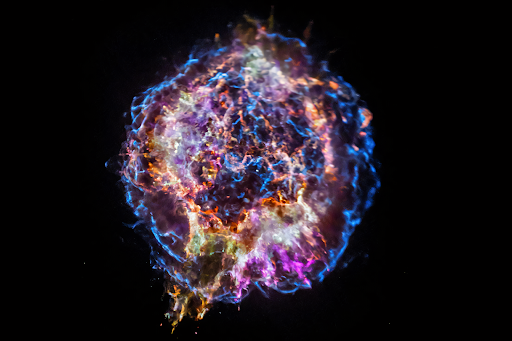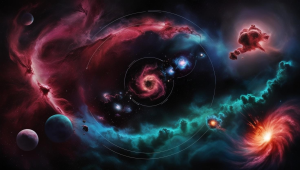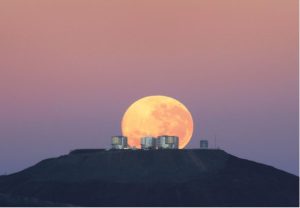
WORMHOLES:COSMIC SHORTCUTS
What if you could rocket from Earth, not to the Moon or Mars, but down a wormhole that loops all the way across the vast Milky Way, slashing travel time
Supernova explosions are among the most cataclysmic events in the universe, marking the explosive demise of massive stars and the birth of new cosmic phenomena. These awe-inspiring displays of celestial fireworks have captivated astronomers for centuries, serving as crucial cosmic beacons that illuminate the mysteries of stellar evolution, nucleosynthesis, and the dynamics of the cosmos. In this blog, we’ll delve into the fascinating world of supernovae, exploring their historical significance, recent advancements in research, and the profound insights they offer into the nature of the universe.
Throughout history, supernovae have actually left an indelible mark on human people, forming our understanding of deep space together with motivating misconceptions, art, plus clinical query. Among one of the most well-known historic supernovae is sn 1054 which happened in the year 1054 ADVERTISEMENT as well as caused the development of the Crab Nebula, a beautiful deposit that remains to be examined by astronomers today. Old astronomers from numerous societies tape-recorded this beautiful occasion consisting of Chinese astronomers that recorded it as an “exclusive star” noticeable in the daytime skies for numerous weeks.

In the modern-day age, improvements in telescopic modern technology as well as monitoring methods have actually enabled researchers to examine supernovae in unmatched information. Among one of the most substantial advancements in supernova research study can be found in the late 20th century with the exploration of kind ia supernovae as standardizable candle lights for gauging global ranges. Monitorings of kind ia supernovae caused the stunning awareness that the development of deep space is speeding up an exploration that gained the 2011 Nobel Prize in Physics and also revolutionized our understanding of dark power.
Current improvements in empirical astronomy have actually made it possible for astronomers to find as well as research supernovae throughout the electro-magnetic range, from super high frequency to gamma rays. Ground-based observatories such as the Palomar Transient Factory plus the Pan-STARRS study have actually found countless supernovae, offering important information for researching their variety as well as underlying physics. Furthermore space-based telescopes like NASA’s Hubble Space Telescope coupled with the future James Webb Space Telescope supply unparalleled sights of supernova remains and also their bordering settings, revealing complex information of their development plus communications with interstellar gas plus dirt.
Together with monitoring initiatives, academic versions together with computational simulations play an essential duty in analyzing the complicated physics of Supernova explosions. High-performance supercomputers imitate the detailed hydrodynamics, nuclear responses, plus feeding on transfer procedures that regulate the characteristics of Supernova explosions, clarifying the devices in charge of powering these global fireworks. Recent improvements in multi-dimensional simulations coupled with boosted understanding of nuclear physics as well as excellent development, have actually resulted in considerable progression in modeling different sorts of supernovae from core-collapse supernovae in enormous celebrities to thermonuclear surges in white overshadows.
Among one of the most fascinating elements of supernova research study is the function these beautiful surges play in the chemical enrichment of deep space. Supernovae incorporate hefty components with nucleosynthesis procedures taking place in their great cores, dispersing these aspects right into the interstellar tool coupled with seeding future generations of celebrities together with alien systems. Monitorings of supernova ranges expose the visibility of varied chemical aspects, offering ideas concerning the progenitor celebrities coupled with the nucleosynthesis paths in charge of their manufacturing. Current research studies have actually concentrated on mapping the beginnings of aspects such as gold, platinum, and also uranium, which are integrated in the severe problems of Supernova explosions as well as spread throughout deep space.
In addition to their clinical value, supernovae have extensive ramifications for the global environment, forming the advancement of galaxies and also affecting the development of excellent populaces. Supernova explosions launch large quantities of power and also energy right into their environments, causing shockwaves that press interstellar gas as well as cause the development of brand-new celebrities. The energized comments from supernovae control the celebrity development price in galaxies, driving galactic winds and also improving the interstellar tool with hefty components synthesized in beautiful heating systems.
To conclude, supernova explosions stand for a few of one of the most amazing occasions in deep space, functioning as global research laboratories for examining the extremes of physics plus chemistry. From old monitorings to modern-day explorations, supernovae remain astound and also influence researchers as well as lovers alike, supplying extensive understandings right into the nature of excellent development, nucleosynthesis plus the characteristics of deep space. As we peer much deeper right into the global tapestry each supernova surge functions as a brilliant sign lighting up the large stretch of deep space as well as our location within it.

What if you could rocket from Earth, not to the Moon or Mars, but down a wormhole that loops all the way across the vast Milky Way, slashing travel time

If you go outdoors on a clear evening and also search for it, you might have the ability to see Jupiter beaming brilliantly amongst the celebrities. At the exact same

Stars, the dazzling points of light that fill up the evening skies are the foundation of galaxies plus the cradles of life itself. From their birth in large clouds of

In the mission to recognize deep space mankind has actually developed progressively effective devices to observe deep space. Completion of this venture is the Extremely Large Telescope (ELT) which is

Space debris, also known as space junk, refers to the defunct artificial objects orbiting Earth. These objects include decommissioned satellites, spent rocket stages, and fragments from collisions and explosions.

The search for exoplanets– planets that orbit stars outside our planetary system– has actually quickly developed into one of the most interesting and dynamic fields of astronomy
Write to
Jasmine Gogoi at csr@scientifictemperament.com
Let’s develop our society with a scientific heart. Join us to build the scientifically nurtured future →